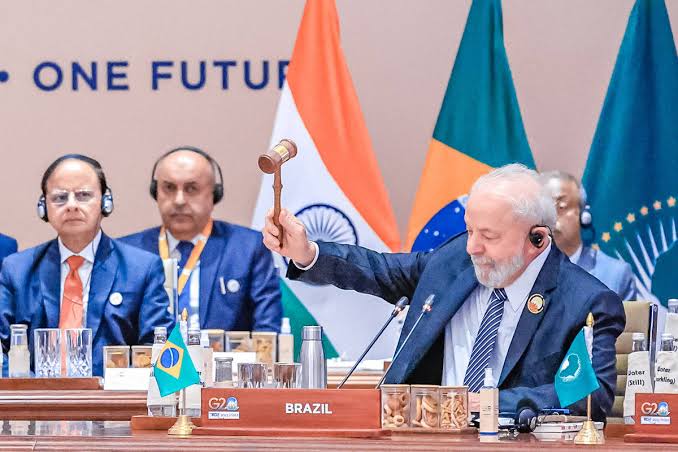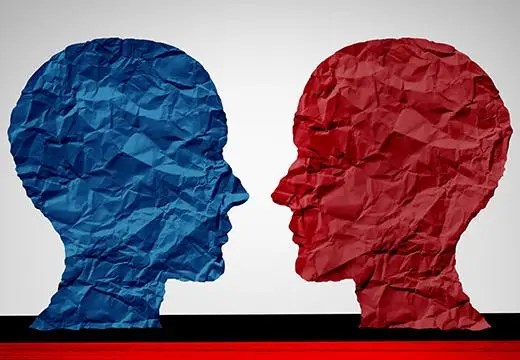In January 2023, Luiz Inácio “Lula” da Silva, leader of the Partido dos Trabalhadores (PT), began his third term as the president of Brazil, the largest economy in Latin America. The economic outlook is promising, with steady growth, controlled inflation, and declining unemployment rate. Despite challenges from a difficult Congress, Lula aimed to revive social and economic policies from his earlier terms (2002-2010). Simultaneously, he is pursuing an active international agenda focused on peace in the Middle East and Ukraine, environmental protection, and reforms in global governance. Brazil’s G20 presidency will conclude in November with a meeting in Rio de Janeiro that is expected to introduce new tax measures on billionaires and initiatives to boost environmental conservation. A Global Alliance Against Hunger will also be launched to tackle global issues.
This article explores the potential for necessary changes to meet Brazilian demands, concerns about the macroeconomic trajectory’s sustainability, and political tensions leading to the 2026 elections. The central argument is that Lula’s external strategy is closely tied to strengthening the internal disputes affected by neoliberal institutions. Success in this approach is vital not only for achieving structural improvements, but also for safeguarding the democratic regime, which faced threats just eight days after Lula took office.
FROM THE PLAN TO ECONOMIC REALITY
Lula’s first years in office have demonstrated promising economic results, surpassing market expectations with a growth rate of 2.9% in 2023 and a projected growth of around 3% in 2024, which is significantly higher than the anticipated 1%. This outpaced both Latin American and global growth averages. Key contributing factors include a substantial increase in exports driven by strong soybean and corn harvests and an increase in household consumption. The recovery of income transfer programs, an 8% increase in the minimum wage at the beginning of 2023, and a decline in unemployment stimulated this consumption. Additionally, successful negotiations in Congress allowed for extra spending, facilitating the resumption of the Bolsa Família program—Lula’s flagship social transfer initiative—which further enhanced the purchasing power of many families.
Inflation has also declined, dropping from 9.3% in 2022 to 4.5% by mid-2024. This reduction can be attributed to the appreciation of the nominal exchange rate and strategic changes in Petrobras’s pricing policies, a state-owned oil company. A high reference interest rate, maintained between 10% and 13%, has attracted capital inflows, contributing to the nominal appreciation of the Brazilian real, from six to five reais per dollar. This appreciation has helped ease domestic price pressures, while the abandonment of Petrobras’s import parity pricing has insulated fuel prices from international fluctuations. Moreover, unemployment rates have improved, decreasing from 8.4% to 6.4%, the lowest level since 2012.
Looking ahead, the projections indicate a slowdown in growth and controlled inflation, although several underlying risks remain. Estimates for 2025 anticipate a modest growth rate of 1%, reflecting the challenges within the neoliberal economic policy framework. The expected agricultural export boom may face obstacles owing to a 20% decline in international prices and severe flooding in Rio Grande do Sul, a crucial agricultural region. Additionally, gross fixed capital formation fell by 3% in 2023, particularly for machinery and equipment, signaling a trend toward productive disinvestment.
Specific tensions persist, especially regarding fiscal policy and proposed changes to public spending rules, along with the Central Bank’s focus on inflation targeting in its exchange and monetary policies. The New Fiscal Scheme (NFS) limits public spending by 2.5% per year and does not provide significant room for large-scale projects, such as the Growth Acceleration Program (PAC) initiated after the 2008 financial crisis. The only way to create additional fiscal space is through tax increases. While newly approved taxes on ultra-wealthy investment funds and simplifications to consumption taxes may boost future tax revenues, they are unlikely to generate sufficient fiscal space for substantial economic initiatives. If inflation projections hold, the new formula for adjusting the minimum wage could lead to real improvements in workers’ living conditions, offering a glimmer of hope for economic growth.
Since June 2024, the international environment has prompted capital outflows and pressure for currency devaluation amid a strengthening dollar against emerging market currencies. This has led to an increase in the exchange rate from 5.10 to 5.85 reais per dollar, prompting government intervention. These exchange rate pressures could lead to higher inflation, and the Central Bank’s inflation targeting policy might necessitate increased interest rates, potentially dampening consumption—the sole growth vector thus far. The emerging prospects underscore the restrictive nature of neoliberal institutional frameworks. In a deteriorating international scenario, these frameworks significantly limit policies aimed at stimulating economic growth and job creation, likely undermining popular support for the Workers’ Party (PT).
THE DOUBLE FRONT OF POLITICAL DISPUTE
The first 22 months of Lula’s administration were characterized by two primary fronts of political engagement. The first is Brazil’s re-emergence on the international stage, where Lula’s charismatic leadership has brought attention to pressing global issues. The second front involves internal political struggles marked by negotiations with Congress and the “independent” Central Bank president. This internal conflict has necessitated a delicate balance to defend democracy amid rising tensions. Just eight days after taking office, Lula faced an attempted coup in Brasília by right-wing groups reportedly backed by military elements, political parties, and the former far-right president, Jair Bolsonaro. A strong international condemnation, combined with decisive judiciary intervention, has played a crucial role in preserving democratic order.
Initial assessments suggest notable progress on both fronts, although external achievements have outstripped internal ones. Although Bolsonaro’s disqualification from elections until 2030 weakened the primary opposition, the threat to democracy remained palpable. The municipal elections last October showed enduring popular support for far-right factions. This dual strategy, addressing both international and domestic issues, acts as a cohesive mechanism; the international agenda creates a vital space for internal maneuvering, pressuring progressive institutional changes, such as implementing higher taxes on the wealthiest individuals. Historical experiences from Lula’s and Dilma’s administrations, particularly the parliamentary coup, demonstrate that meaningful transformation requires addressing more than just internal conflicts, as all parties, especially capital and labor, must benefit from these changes.
Confronting the Western neoliberal consensus is critical to preventing societal demands for transformation from being penalized by international financial markets, which can manipulate credit ratings and provoke tensions in exchange rates, inflation, and macroeconomic instability—elements that could be perceived as a “soft coup” by market forces. The push for a multipolar international system anchored in initiatives like BRICS is gaining traction, with the inclusion of new partners (BRICS+) becoming increasingly significant. A comprehensive strategy for sustainable growth and development has emerged as a priority, earning Lula invitations to key international events such as COP27 and rekindling relations with G-7 economies. This dual approach exemplifies how international relations can expand domestic political maneuvering.
On the local front, tensions in economic policy highlight two critical aspects of the neoliberal institutional framework: (i) fiscal policy and potential adjustments to public spending rules and (ii) the Central Bank’s exchange and monetary policy, which is heavily focused on inflation targeting. These tools are central to the functioning of the Brazilian state but often hinder democratic efforts to address urgent social needs, such as building larger schools and universities, improving the water supply in drought-affected regions, expanding healthcare coverage, and fulfilling other social commitments. Instead of resorting to street mobilization or constitutional referendums to break congressional gridlock, as seen in Colombia and Chile, Lula aims to foster a new international consensus to counter the global rise of anti-democratic ultra-right and fascist movements.
PERSPECTIVES FOR THE PT’S POLITICAL PROJECT
Emerging prospects can be framed in three possible scenarios.
- Advancement of International Patterns: This scenario envisions a continued mandate for Lula or a successor, enabling deeper transformations that significantly enhance the quality of life of the majority. Economic results would ideally follow a path of gradual improvement, partially satisfying the basis of popular support and facilitating continuity through the vote in 2026.
- Political Blockage: In this scenario, the outcome of Lula’s third term may fall short of maintaining popular support. This could create a political space for conservative sectors to promote a candidate from the economic and financial establishment, not necessarily linked to the ultra-right or Bolsonaro movement.
- Polarization and Discontent: This scenario posits a complete disagreement with the results of Lula’s third term, leading to increased polarization between PT’s ideological supporters and a new leadership emerging from the extreme right, possibly figures such as São Paulo Governor Tarcísio de Freitas, or members of Jair Bolsonaro’s family.
Currently, the trajectory appears to lean between scenarios one and two. However, history reminds us that “unexpected” geopolitical, health, and climatic events can swiftly alter the course of events.
Sergio Martin Paez is Professor of Macroeconomics and Economic Development at the Institute of Urban and Regional Research and Planning (UFRJ-Brazil) and postdoctoral researcher at the same university with financial support from FAPERJ.
Publisher: Source link











